In this post, we will show you how to update NVIDIA drivers properly on your Windows computer. Graphics drivers are essential software components that enable the operating system to communicate with your graphics hardware. It is important to keep these drivers updated to get optimal performance in terms of graphics rendering, frame rates, and overall system responsiveness.
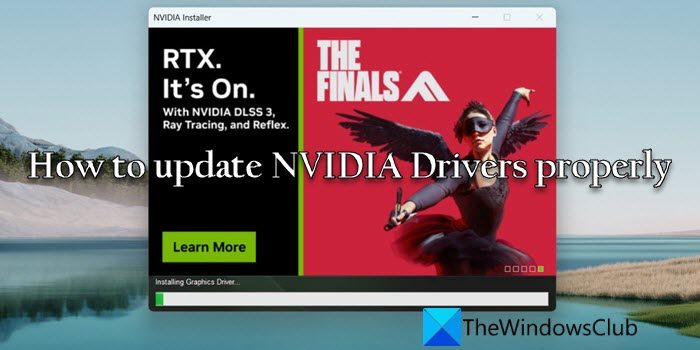
You can update your NVIDIA drivers using Device Manager, Windows Update, or third-party tools like NV Updater; though we recommend updating NVIDIA drivers from official sources only.
Is it good to always update your NVIDIA drivers?
Driver updates ensure compatibility with the latest software releases, provide better stability for your system, and may introduce new features and capabilities to your NVIDIA GPU. They also include security fixes that help protect your system from malicious software that may enter your system through games downloaded from untrustworthy sources. Generally speaking however, if you do not face any issues, there is no need to go out of the way to update your drivers.
How to update NVIDIA Drivers on Windows 11/10
To update your NVIDIA graphics drivers, visit the official NVIDIA website or use GeForce Experience, a software component that notifies you of new NVIDIA GPU driver updates and installs them with one click. Let us have a detailed look at them.
Note:
- You must log in to Windows as an administrator to update the graphics drivers.
- Before updating the drivers, we recommend creating a system restore point, so that you may return to a previous working state in case something goes wrong.
1] Manually update NVIDIA Drivers
Right-click the Start button icon and select Device Manager from the WinX menu. Click on the Display adapters option and note down your NVIDIA GPU model.
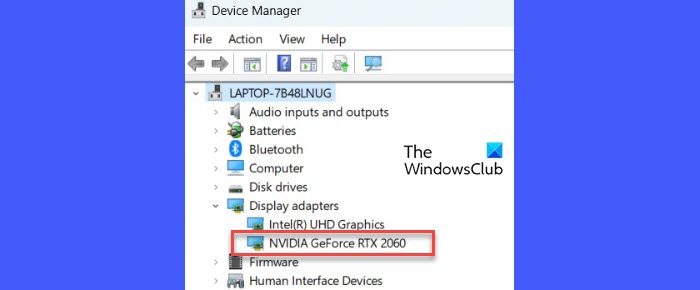
Next, visit the NVIDIA drivers download page here, and follow these instructions:
- Select the Product Type, Product Series, and Product that matches your GPU.
- Select your Operating System.
- Select the Download Type based on the Product Type.
- Select your preferred Langauge.
- Click on the Search button.
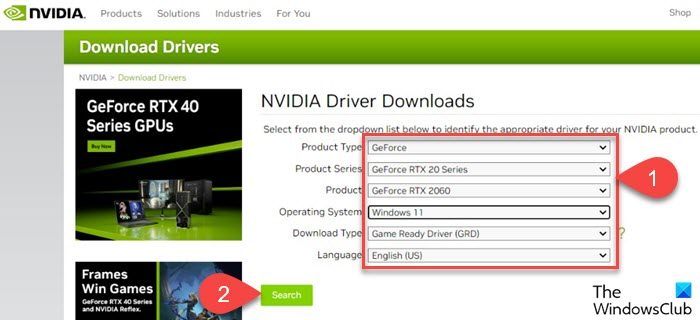
You’ll be shown available drivers based on your search criteria. Click on the Download button to download the driver installer for selected drivers.
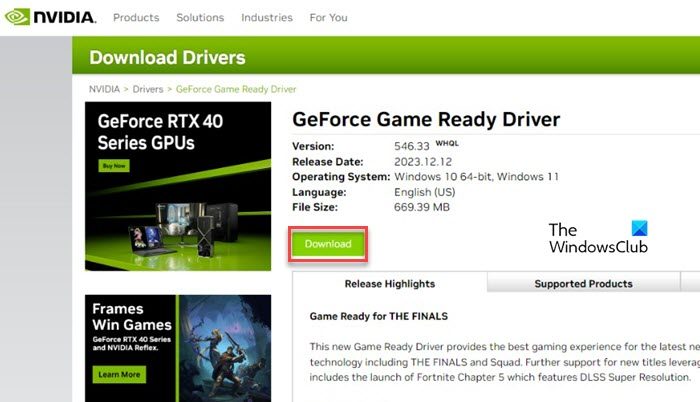
Note: Before starting the installation process, close any GPU monitoring utilities, anti-virus/anti-malware programs, and other applications that may be actively using the graphics card. These applications can interfere with driver registration, affecting performance or stability.
Double-click on the downloaded file to run the driver installer. Click Yes in the User Account Control prompt. A dialogue will appear asking for a location to save the driver files. Click OK to continue with the default location.
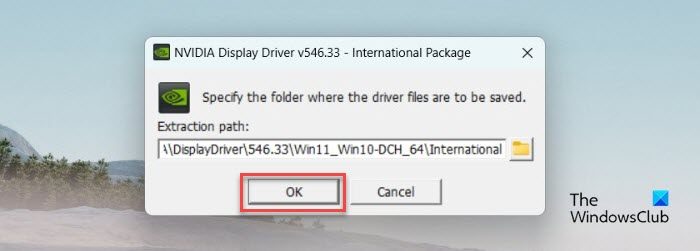
After a while, NVIDIA Installer will open up. Follow the on-screen instructions to begin installing your graphics drivers. Reboot your PC once the installation finishes.
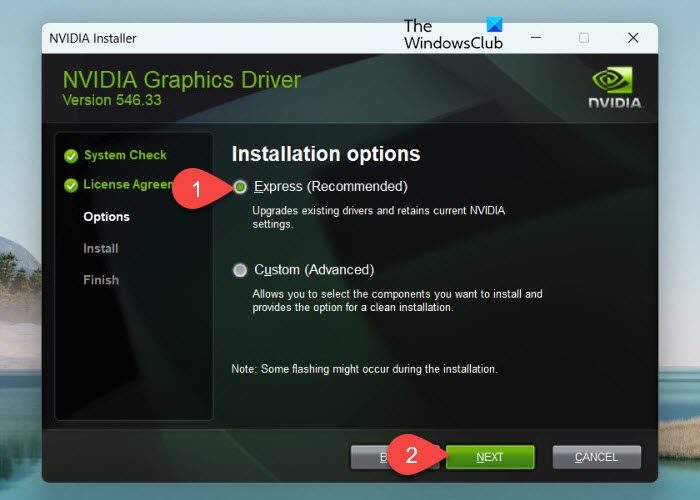
Read: Where to download NVIDIA drivers for Windows.
2] Update NVIDIA drivers using GeForce Experience
If you don’t want to manually update your drivers, use NVIDIA GeForce Experience. Visit the official NVIDIA website here and download GeForce Experience. Double-click on the downloaded .exe file and install the application following the on-screen instructions.
Launch the GeForce Experience app (type ‘GeForce’ in the Windows Search bar and select GeForce Experience from the search results). You’ll be prompted to log in or sign up to continue. Sign up with a valid email and password or use your Google/Facebook account credentials. After signing in, click on the Drivers tab in the top-left corner.
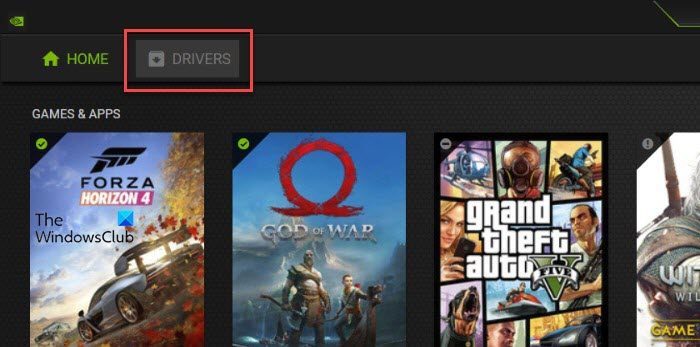
You’ll be shown available driver updates. Click on the Download button in the top-right corner of the driver version to begin downloading the driver.
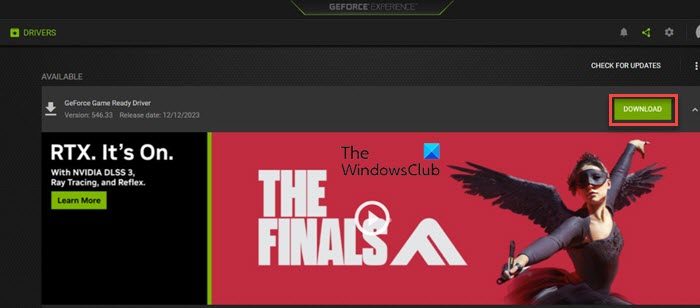
GeForce Experience will show a progress bar indicating the driver download.
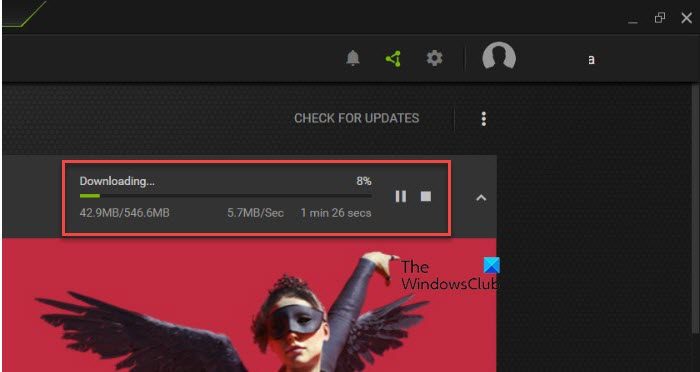
Once it is downloaded, you’ll see the installation options. Click on the Express Installation button and allow GeForce Experience to handle the update process.
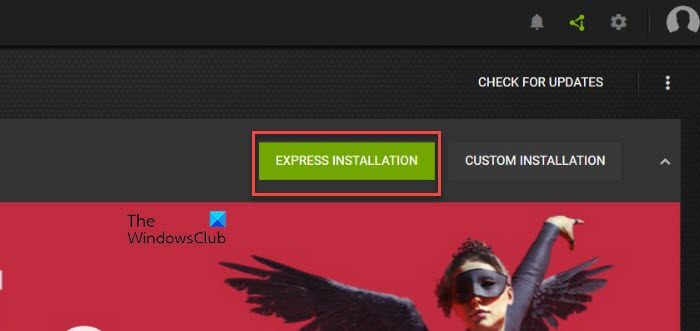
After the installation is complete, reboot your PC to apply changes.
NVIDIA Update for Geforce Drivers
If you download Release 270 or later GeForce/ION driver from www.nvidia.com, you will see the option to install NVIDIA Update, another software from NVIDIA that provides driver update notifications for GeForce and ION GPUs for both desktop and notebook PCs.
Once installed, NVIDIA Update scans your hardware to determine the appropriate drivers for your NVIDIA GPUs. It also provides automatic updates for game and program profiles, including SLI profiles, starting with R275 drivers.
You can configure NVIDIA Update from the NVIDIA Control Panel or the system tray icon to change how often your PC should check for available updates. Click here to learn more about NVIDIA Update.
I hope you find this useful.
Read: NVIDIA drivers not installing or working.
Does updating NVIDIA drivers increase FPS?
Regularly checking for driver updates and installing them can significantly improve your overall gaming experience, including FPS (frames per second). Driver updates include optimization code, bug fixes, and compatibility improvements that may result in better utilization of your GPU’s capabilities. However, the impact of a driver update on FPS can vary depending on your GPU model, system configuration, and the specific game you’re playing.